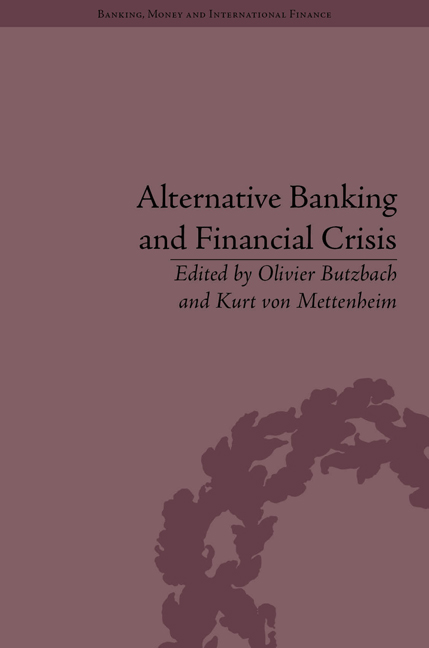Book contents
- Frontmatter
- CONTENTS
- Acknowledgements
- List of Contributors
- List of Figures and Tables
- Introduction
- Part I Historical Context and Conceptual Framework
- Part II Comparative Country Cases
- 5 A Qualitative and Statistical Analysis of European Cooperative Banking Groups
- 6 The Persistence of the Three-Pillar Banking System in Germany
- 7 Alternative Banks in a Dualistic Economy: The Case of Italy before and during the Euro Crisis
- 8 Alternative Banks on the Margin: The Case of Building Societies in the United Kingdom
- 9 The United States: Alternative Banking from Mainstream to the Margins
- 10 BRIC Statecraft and Government Banks
- 11 Cooperative Banks in India: Alternative Banks Impervious to the Global Crisis?
- Conclusion
- Notes
- Index
7 - Alternative Banks in a Dualistic Economy: The Case of Italy before and during the Euro Crisis
from Part II - Comparative Country Cases
- Frontmatter
- CONTENTS
- Acknowledgements
- List of Contributors
- List of Figures and Tables
- Introduction
- Part I Historical Context and Conceptual Framework
- Part II Comparative Country Cases
- 5 A Qualitative and Statistical Analysis of European Cooperative Banking Groups
- 6 The Persistence of the Three-Pillar Banking System in Germany
- 7 Alternative Banks in a Dualistic Economy: The Case of Italy before and during the Euro Crisis
- 8 Alternative Banks on the Margin: The Case of Building Societies in the United Kingdom
- 9 The United States: Alternative Banking from Mainstream to the Margins
- 10 BRIC Statecraft and Government Banks
- 11 Cooperative Banks in India: Alternative Banks Impervious to the Global Crisis?
- Conclusion
- Notes
- Index
Summary
Introduction
Between the early 1990s and 2005, the Italian banking system has experienced a profound transformation. The acceleration of European economic integration, culminating in the adoption of the euro, and the birth of a highly integrated European financial market have accentuated competitive pressures: Italian banks, which had been operating for a long time in a closed and protected market, suddenly faced a much more competitive market characterized by the widespread presence of large credit institutions.
These challenges have led successive governments to devise banking regulatory reforms and to choose new models of supervision. Thus Italian banking has gone from a closed system, in which access to the market and the range of services offered were subject to stringent administrative constraints, to one in which all obstacles to banking activities were removed, keeping only prudential controls in order to ensure stability.
A legitimate question would therefore be to ask whether, before the 2007–8 global financial crisis and the eurozone sovereign debt crisis but after the radical changes mentioned above, the Italian banking system was still able to meet the needs of an economic system characterized by a profound north–south dualism and dominated by small businesses dependent, almost exclusively, on bank credit for their funding.
Furthermore, it is interesting to see whether and to what extent non-profitbanks, which in the Italian context are mainly small, local cooperative banks (banche di credito cooperativo) and medium to large-size cooperative banking groups (banche popolari), have behaved differently from joint-stock banks in the context of this transformation.
- Type
- Chapter
- Information
- Alternative Banking and Financial Crisis , pp. 123 - 146Publisher: Pickering & ChattoFirst published in: 2014



